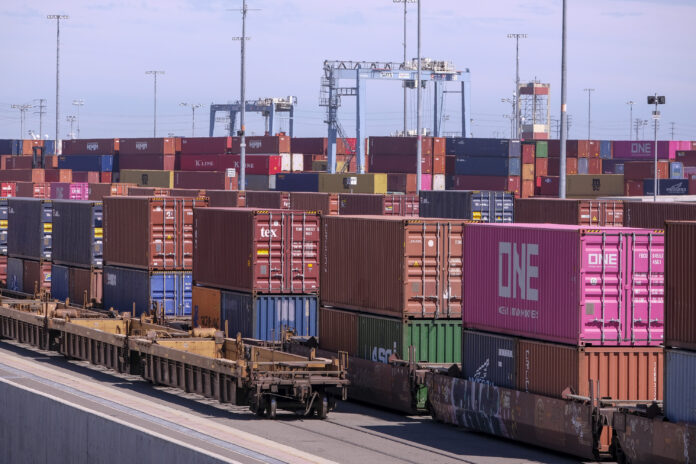The record-breaking cargo volume streak at the San Pedro Bay continues. Both local ports last month bested their February 2020 results – Long Beach by 3.2% and Los Angeles by 7.3%.
“We are moving record amounts of cargo and catching up with the ongoing surge of imports,” Port of Long Beach Executive Director Mario Cordero said in a statement. “Meanwhile, we are proceeding with measures we will need in the long term, such as development of our Supply Chain Information Highway data solution, which provides greater cargo visibility, connectivity and predictability.”
Dockworkers and terminal operators in Long Beach last month moved 796,560 twenty-foot-equivalent units (TEUs) of container cargo, including 390,335 TEUs of imports, a 4.4% year-over-year uptick. Exports declined 1.2% to 117,935 TEUs, while the volume of empty containers was up 3.5% to 288,290 TEUs.
The Port of Los Angeles meanwhile moved 857,764 TEUs of cargo last month, up from 799,315 TEUs in February 2021. Imports added up to 424,072 TEUs, a 2.7% increase, while exports dipped 5.7% to 95,442 TEUs. Volume of empty containers headed to Asia surged 18.6% to 338,251 TEUs.
“Overall, we’re off to a very good start this year, up more than 5% compared to our record-breaking 2021,” the L.A. port’s Executive Director Gene Seroka said during a video press conference on March 16. “And while there will be robust activity on the docks this spring, it will be difficult to match last year’s numbers. This past March, April, and May, the Port of Los Angeles averaged 970,000 TEUs. Expect those numbers to soften some but still remain solid. Today there are 44 ships in the queue on their way to the San Pedro bay port – that’s down 60% from a high of a 109 just back in January. The improvement is a combined result of the projected lull after Lunar New Year in Asia and increased fluidity on our container terminals. In the weeks ahead we expect to see an increase in vessels headed our way as retailers began a big push to replenish shelves.”
Dee Dee Meyers, director of the state’s Office of Budget and Economic Development, joined Seroka during the news conference, providing details about Gov. Gavin Newsom’s $2.3 billion budget allocation for California’s 11 ports. Meyers said that about 70% of the monies will go to Southern California, and the remainder will be distributed to ports in the Bay Area.
“That’s based on the overall traffic and the logistics (needs),” she said. “And then within those two large buckets, exactly how that money gets allocated will depend on what the stakeholders tell us their priorities are.”
Meyers added that overall priorities are solving short-term problems where possible, but also focusing on medium- and long-term investments to increase the efficiency and the resiliency of the supply chain.

